Jewelweed has long been a favorite plant.
I was reminded of that this morning when during an early morning walk I encountered a small stand of them along the roadside. It’s only in the last few years that I’ve learned that hummingbirds love the flowers.
Their seed pods fatten when ripe. The seeds inside darken as they ripen.
At the slightest touch, the outer sections of the pod twist and coil, and fling the seeds in all directions.
I closed my hand around a pod, to capture some of the seeds.
I brought the pod and some seeds home, to photograph them with a darker background.
I couldn’t resist playing with the pieces.
One day when I was a boy I had some seeds in my hand.
Curious about what was inside, I rubbed off the outer jacket of the seed.
What a surprise!
Some will tell you that jewelweed is so named because when you hold the leaves underwater, they appear silvery, from a layer of air that they trap at the surface of their leaves.
A good notion.
But I prefer to think that the true “jewel” of the jewelweed is the incredible blue of the inner seed coat.

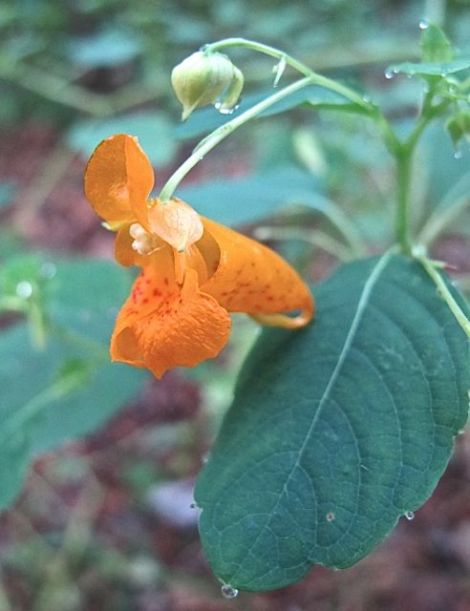
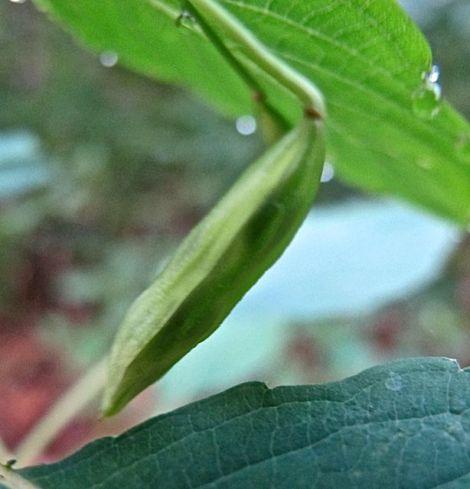
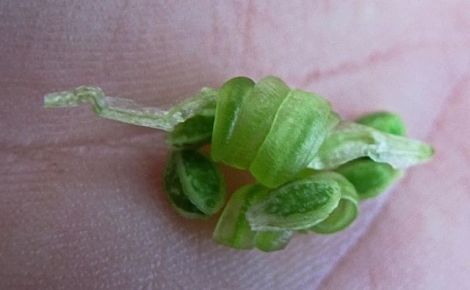
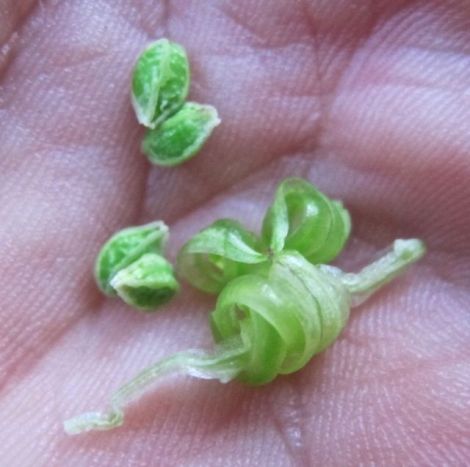
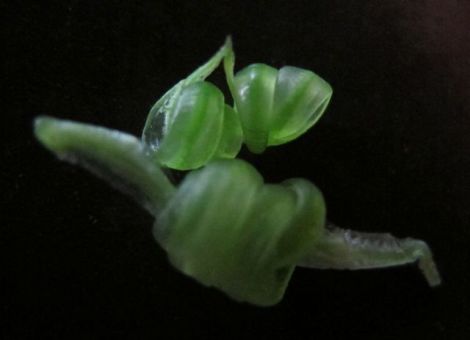
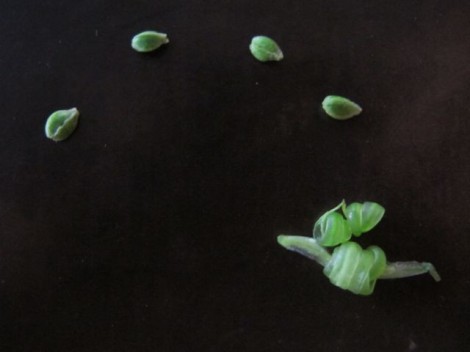
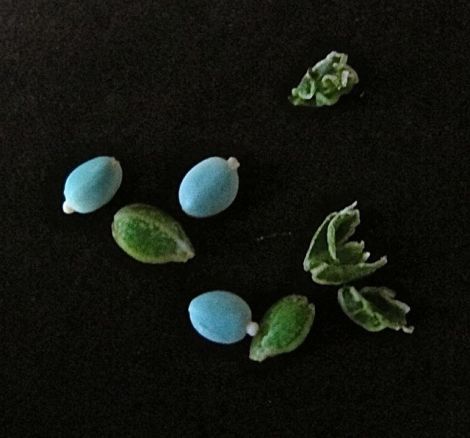
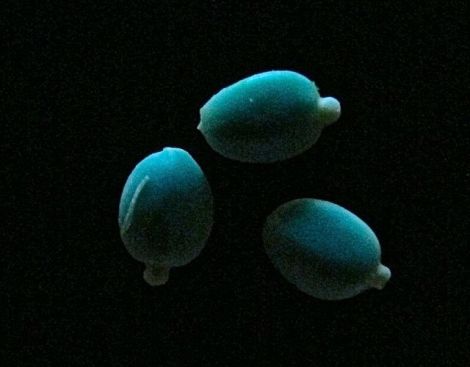
Try those lovely blue seeds — remarkably like walnuts in flavor. Thanks for this post (all of them, actually!)
Neat! And thank you. I shall eat some today.
Pingback: Impatiens capensis | Find Me A Cure·
I too will try eating the lovely blue seeds remarkably like walnuts in flavor, as I have Jewelweed growing in the tangled mass that is the end of my backyard and the beginning of wetted woodlands. This was a particularly lovely installment of the Tompost Pile, in simplicity, in images and ideas. Yes, thanks.
Awesome botany lesson, thank you. Having never travelled to your area of the world, I had not heard of this plant.
Hi, Tom. I happened upon your blog this morning while researching jewelweed. I am at work on a sequel to Seeing Flowers, called Seeing Seeds and jewelweed is on the list. It is a fascinating plant. Your thoughts mirror mine and your photos are splendid.
As you know, for such small things, seeds are enormously complex (botanically, biologically, agriculturally, socially, culturally, on and on) and the project is daunting indeed. I am taking Anne Lamott’s writing advice and going ‘bird by bird’ or rather ‘seed by seed’; I’ll tackle the book’s introduction later!
Maybe we will meet this summer? If you are willing and able to come to my talk(s) at Polly Hill, July 9 and 10.
I just read an excellent novel titled Jewelweed, by David Rhodes. It’s set in the Driftless region of Wisconsin. I didn’t realize that jewelweed grew here but will be looking for it now.